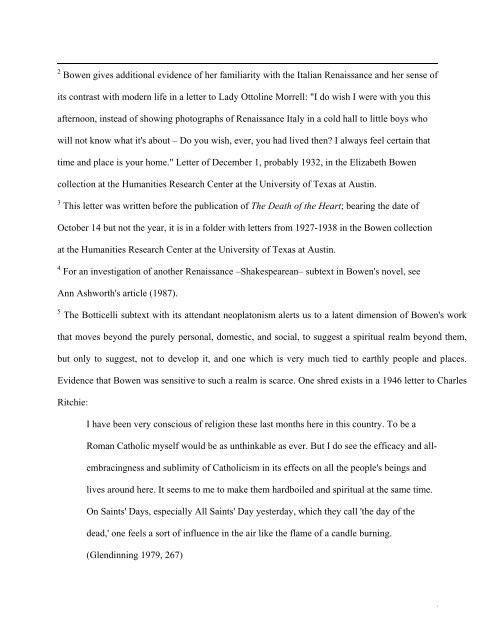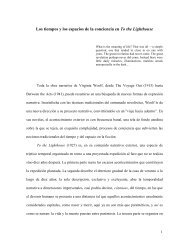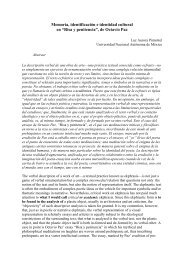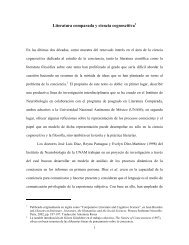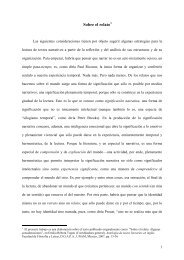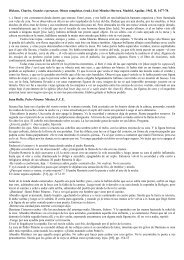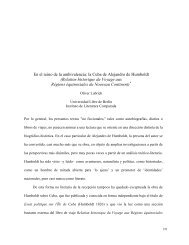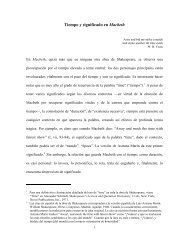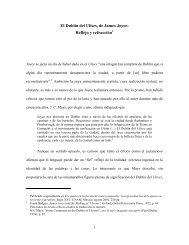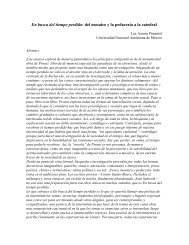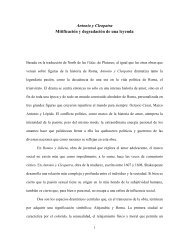Portia as Primavera: Cultural Memory in The Death of the Heart
Portia as Primavera: Cultural Memory in The Death of the Heart
Portia as Primavera: Cultural Memory in The Death of the Heart
Create successful ePaper yourself
Turn your PDF publications into a flip-book with our unique Google optimized e-Paper software.
2 Bowen gives additional evidence <strong>of</strong> her familiarity with <strong>the</strong> Italian Renaissance and her sense <strong>of</strong>its contr<strong>as</strong>t with modern life <strong>in</strong> a letter to Lady Ottol<strong>in</strong>e Morrell: "I do wish I were with you thisafternoon, <strong>in</strong>stead <strong>of</strong> show<strong>in</strong>g photographs <strong>of</strong> Renaissance Italy <strong>in</strong> a cold hall to little boys whowill not know what it's about – Do you wish, ever, you had lived <strong>the</strong>n? I always feel certa<strong>in</strong> thattime and place is your home." Letter <strong>of</strong> December 1, probably 1932, <strong>in</strong> <strong>the</strong> Elizabeth Bowencollection at <strong>the</strong> Humanities Research Center at <strong>the</strong> University <strong>of</strong> Tex<strong>as</strong> at Aust<strong>in</strong>.3 This letter w<strong>as</strong> written before <strong>the</strong> publication <strong>of</strong> <strong>The</strong> <strong>Death</strong> <strong>of</strong> <strong>the</strong> <strong>Heart</strong>; bear<strong>in</strong>g <strong>the</strong> date <strong>of</strong>October 14 but not <strong>the</strong> year, it is <strong>in</strong> a folder with letters from 1927-1938 <strong>in</strong> <strong>the</strong> Bowen collectionat <strong>the</strong> Humanities Research Center at <strong>the</strong> University <strong>of</strong> Tex<strong>as</strong> at Aust<strong>in</strong>.4 For an <strong>in</strong>vestigation <strong>of</strong> ano<strong>the</strong>r Renaissance –Shakespearean– subtext <strong>in</strong> Bowen's novel, seeAnn Ashworth's article (1987).5 <strong>The</strong> Botticelli subtext with its attendant neoplatonism alerts us to a latent dimension <strong>of</strong> Bowen's workthat moves beyond <strong>the</strong> purely personal, domestic, and social, to suggest a spiritual realm beyond <strong>the</strong>m,but only to suggest, not to develop it, and one which is very much tied to earthly people and places.Evidence that Bowen w<strong>as</strong> sensitive to such a realm is scarce. One shred exists <strong>in</strong> a 1946 letter to CharlesRitchie:I have been very conscious <strong>of</strong> religion <strong>the</strong>se l<strong>as</strong>t months here <strong>in</strong> this country. To be aRoman Catholic myself would be <strong>as</strong> unth<strong>in</strong>kable <strong>as</strong> ever. But I do see <strong>the</strong> efficacy and allembrac<strong>in</strong>gnessand sublimity <strong>of</strong> Catholicism <strong>in</strong> its effects on all <strong>the</strong> people's be<strong>in</strong>gs andlives around here. It seems to me to make <strong>the</strong>m hardboiled and spiritual at <strong>the</strong> same time.On Sa<strong>in</strong>ts' Days, especially All Sa<strong>in</strong>ts' Day yesterday, which <strong>the</strong>y call '<strong>the</strong> day <strong>of</strong> <strong>the</strong>dead,' one feels a sort <strong>of</strong> <strong>in</strong>fluence <strong>in</strong> <strong>the</strong> air like <strong>the</strong> flame <strong>of</strong> a candle burn<strong>in</strong>g.(Glend<strong>in</strong>n<strong>in</strong>g 1979, 267)278


